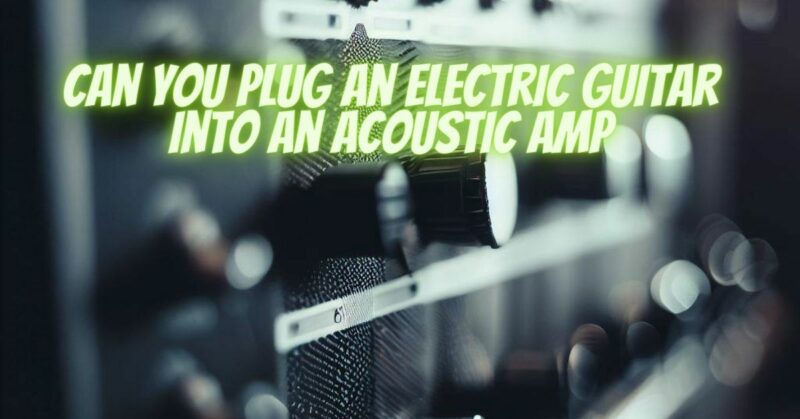The world of amplifiers and guitars offers a vast array of choices, and sometimes, musicians seek unconventional pairings to create unique sounds or adapt to different performance scenarios. One such combination is using electric guitars with acoustic amplifiers. In this comprehensive article, we will explore the compatibility of electric guitars with acoustic amplifiers, discussing the advantages, considerations, and potential challenges of using this setup.
Understanding Acoustic Amplifiers
Acoustic amplifiers, often designed for acoustic-electric guitars, are specialized amplification systems tailored to reproduce the natural sound of acoustic instruments, such as acoustic guitars, violins, and microphones. They typically incorporate features like preamps, EQ controls, and feedback suppression to enhance the acoustic instrument’s tone and projection.
Compatibility and Benefits
- Clean Sound Reproduction:
- Acoustic amplifiers are designed to faithfully reproduce the natural tones of acoustic instruments. When used with electric guitars, they provide a clean, uncolored sound that highlights the guitar’s true character.
- Versatility:
- Acoustic amplifiers are not limited to acoustic-electric guitars. They can accommodate a variety of sound sources, including microphones and electric guitars, making them versatile options for multi-instrumentalists.
- Onboard Controls:
- Many acoustic amplifiers feature EQ controls, effects, and built-in preamps, allowing electric guitarists to shape their sound and experiment with different tones.
- Portability:
- Acoustic amplifiers are often designed with portability in mind, making them suitable for gigging musicians who need a lightweight and compact amplifier.
- Feedback Suppression:
- Some acoustic amplifiers come equipped with feedback suppression technology, which can be beneficial when using electric guitars at high volumes.
Considerations and Challenges
- Tonal Expectations:
- While acoustic amplifiers offer clean and transparent sound, they may not produce the same overdriven or distorted tones that electric guitarists often seek. Musicians must manage their expectations regarding tonal possibilities.
- Volume and Power:
- Acoustic amplifiers are generally designed for lower to moderate volume levels. If an electric guitarist requires higher volumes and distortion effects, a dedicated electric guitar amplifier may be more suitable.
- Effects Compatibility:
- Electric guitarists who rely heavily on effects pedals should ensure compatibility with the acoustic amplifier’s signal chain. Some effects may work differently or less effectively in this setup.
- Speaker Size:
- Acoustic amplifiers may feature smaller speakers optimized for acoustic frequencies. This can affect the fullness and projection of an electric guitar’s sound, particularly in larger venues.
Tips for Using Electric Guitars with Acoustic Amplifiers
- Experiment with EQ Settings: Explore the amplifier’s EQ controls to shape the electric guitar’s tone to your liking.
- Use Effects Sparingly: If using effects pedals, be mindful of how they interact with the acoustic amplifier. Some effects may require adjustments to sound their best.
- Monitor Feedback: Pay attention to potential feedback issues, especially when playing at higher volumes. Positioning and EQ adjustments can help manage feedback.
- Test the Setup: Before a performance, thoroughly test the electric guitar and acoustic amplifier combination to ensure it meets your tonal and volume requirements.
Using electric guitars with acoustic amplifiers is a creative and versatile approach that can yield unique sonic results. While there are considerations and potential challenges, this setup can provide clean, uncolored sound reproduction and allow electric guitarists to experiment with different tones and effects. The compatibility of electric guitars with acoustic amplifiers ultimately depends on the musician’s preferences, playing style, and performance needs. By understanding the strengths and limitations of this combination, musicians can make informed choices to achieve their desired sound.


